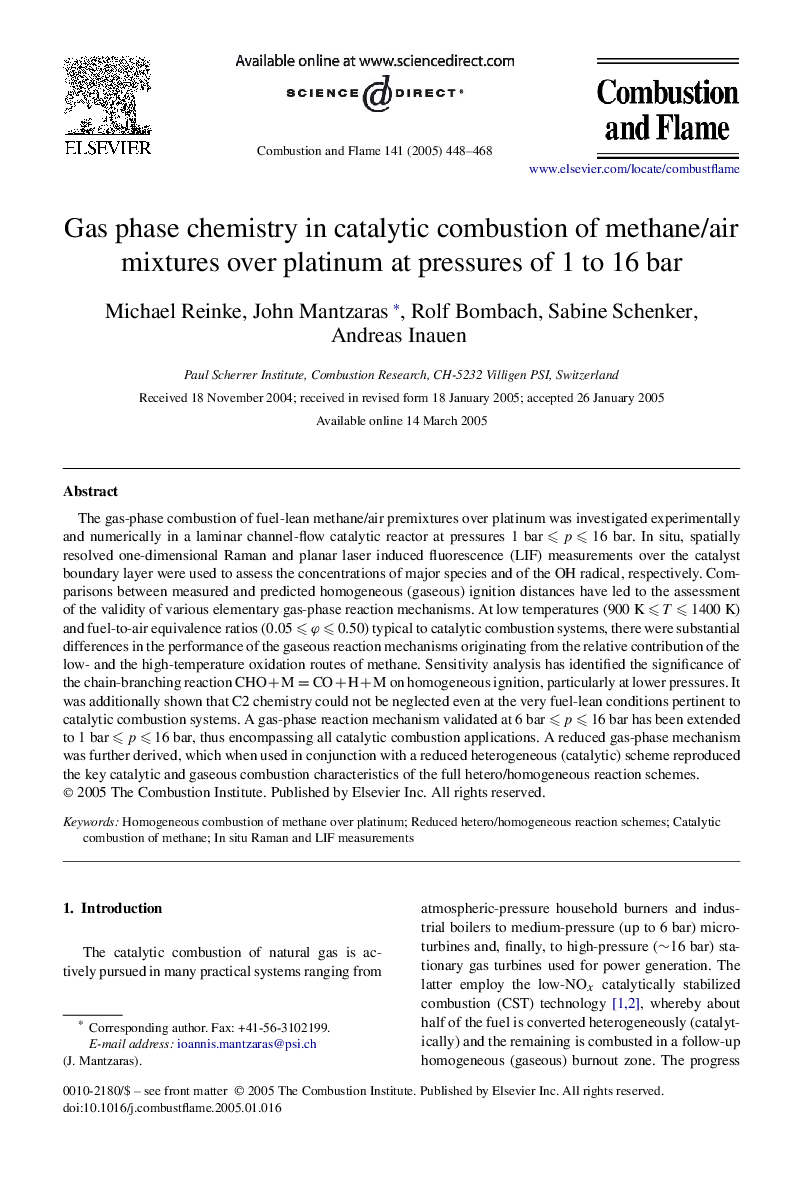| Article ID | Journal | Published Year | Pages | File Type |
|---|---|---|---|---|
| 10264466 | Combustion and Flame | 2005 | 21 Pages |
Abstract
The gas-phase combustion of fuel-lean methane/air premixtures over platinum was investigated experimentally and numerically in a laminar channel-flow catalytic reactor at pressures 1bar⩽p⩽16bar. In situ, spatially resolved one-dimensional Raman and planar laser induced fluorescence (LIF) measurements over the catalyst boundary layer were used to assess the concentrations of major species and of the OH radical, respectively. Comparisons between measured and predicted homogeneous (gaseous) ignition distances have led to the assessment of the validity of various elementary gas-phase reaction mechanisms. At low temperatures (900K⩽T⩽1400K) and fuel-to-air equivalence ratios (0.05⩽Ï⩽0.50) typical to catalytic combustion systems, there were substantial differences in the performance of the gaseous reaction mechanisms originating from the relative contribution of the low- and the high-temperature oxidation routes of methane. Sensitivity analysis has identified the significance of the chain-branching reaction CHO + M = CO + H + M on homogeneous ignition, particularly at lower pressures. It was additionally shown that C2 chemistry could not be neglected even at the very fuel-lean conditions pertinent to catalytic combustion systems. A gas-phase reaction mechanism validated at 6bar⩽p⩽16bar has been extended to 1bar⩽p⩽16bar, thus encompassing all catalytic combustion applications. A reduced gas-phase mechanism was further derived, which when used in conjunction with a reduced heterogeneous (catalytic) scheme reproduced the key catalytic and gaseous combustion characteristics of the full hetero/homogeneous reaction schemes.
Keywords
Related Topics
Physical Sciences and Engineering
Chemical Engineering
Chemical Engineering (General)
Authors
Michael Reinke, John Mantzaras, Rolf Bombach, Sabine Schenker, Andreas Inauen,
